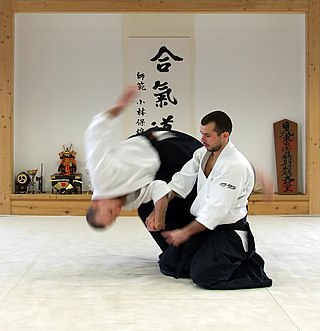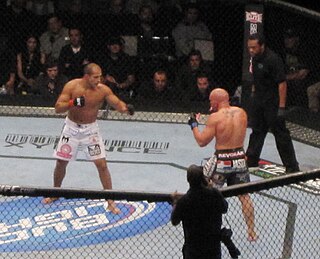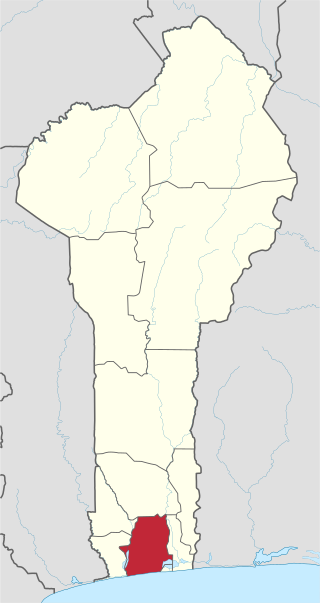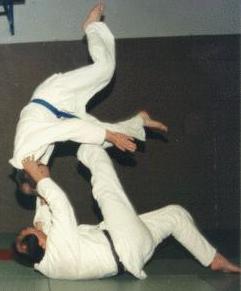Tori may refer to:
Tori may refer to:

Aikido is a modern Japanese martial art that is split into many different styles, including Iwama Ryu, Iwama Shin Shin Aiki Shuren Kai, Shodokan Aikido, Yoshinkan, Renshinkai, Aikikai and Ki Aikido. Aikido is now practiced in around 140 countries. It was originally developed by Morihei Ueshiba, as a synthesis of his martial studies, philosophy and religious beliefs. Ueshiba's goal was to create an art that practitioners could use to defend themselves while also protecting their attackers from injury. Aikido is often translated as "the way of unifying (with) life energy" or as "the way of harmonious spirit". According to the founder's philosophy, the primary goal in the practice of aikido is to overcome oneself instead of cultivating violence or aggressiveness. Morihei Ueshiba used the phrase masakatsu agatsu katsuhayabi" to refer to this principle.

Judo is an unarmed modern Japanese martial art, Olympic sport, and the most prominent form of jacket wrestling competed internationally. Judo was created in 1882 by Kanō Jigorō as an eclectic martial art, distinguishing itself from its predecessors due to an emphasis on "randori" instead of "kata" alongside its removal of striking and weapon training elements. Judo rose to prominence for its dominance over established jujutsu schools in tournaments hosted by the Tokyo Metropolitan Police Department, resulting in its adoption as the department's primary martial art. A judo practitioner is called a "judoka", and the judo uniform is called "judogi".
Kata is a martial arts term referring to a pattern of defense-and-attack.

Martial arts are codified systems and traditions of combat practiced for a number of reasons such as self-defense; military and law enforcement applications; competition; physical, mental, and spiritual development; entertainment; and the preservation of a nation's intangible cultural heritage.
Hara may refer to:
Tara may refer to:

Mixed martial arts (MMA) is a full-contact combat sport based on striking, grappling and ground fighting, incorporating techniques from various combat sports from around the world. The first documented use of the term mixed martial arts was in a review of UFC 1 by television critic Howard Rosenberg in 1993.

Korean martial arts are fighting practices and methods which have their place in the history of Korea but have been adapted for use by both military and non-military personnel as a method of personal growth or recreation. The history of Korean martial arts can be traced as far back as the prehistoric era.
Shoot wrestling is a combat sport that originated in Japan's professional wrestling circuit (Puroresu) of the 1970s. Professional wrestlers of that era attempted to use more realistic or even "full contact" moves in their matches to increase their excitement, diminishing or eschewing the theatrical elements and acrobatics, looking more similar to an actual, unscripted fight. The name "shoot wrestling" comes from the professional wrestling term "shoot", which refers to any unscripted occurrence within a scripted wrestling event. Shoot wrestling incorporated realistic moves from submission grappling and various kickboxing styles. It was particularly inspired and influenced by catch wrestling, a form of wrestling with submissions that was the predominant style of professional wrestling in the 19th and early 20th century, at the time not yet predetermined.

Bartitsu is an eclectic martial art and self-defence method originally developed in England in 1898–1902, combining elements of boxing, jujitsu, cane fighting and French kickboxing (savate). In 1903, it was immortalised by Sir Arthur Conan Doyle, author of the Sherlock Holmes mystery stories. Dormant throughout most of the 20th century, Bartitsu has experienced a revival since 2002.
Toots may refer to:

Atlantique is one of the twelve departments in Benin. The department is located in south-central Benin along the Atlantic coast, between Mono and Kouffo Department in the west, Zou in the north, and Ouémé in the east. The department of Atlantique was bifurcated in 1999 when some of its territories was transferred to the newly formed Littoral Department.

In martial arts, a throw is a grappling technique that involves off-balancing or lifting an opponent, and throwing them to the ground, in Japanese martial arts referred to as nage-waza, 投げ技, "throwing technique". Throws are a subset of takedown (grappling). Certain throwing techniques called sacrifice throws involve putting oneself in a potentially disadvantageous position, such as on the ground, in order to execute a throw.
Ama or AMA may refer to:
The origins of Asian martial arts are diverse and scattered, having roots in various regions of Asia. Various Asian martial arts reference the study of animal movements as inspiration for martial arts techniques.
Oti or OTI may refer to:

Jujutsu, also known as jiu-jitsu and ju-jitsu, is a family of Japanese martial arts and a system of close combat that can be used in a defensive or offensive manner to kill or subdue one or more weaponless or armed and armored opponents. Jiu-jitsu dates back to the 1530s and was coined by Hisamori Tenenouchi when he officially established the first jiu-jitsu school in Japan. This form of martial arts uses few or no weapons at all and includes strikes, throws, holds, and paralyzing attacks against the enemy. Jujutsu developed from the warrior class around the 17th century in Japan. It was designed to supplement the swordsmanship of a warrior during combat. A subset of techniques from certain styles of jujutsu were used to develop many modern martial arts and combat sports, such as judo, aikido, sambo, ARB, Brazilian jiu-jitsu, and mixed martial arts. The history of the art during this time is uncertain because teachers kept everything secret to give their art a feeling of importance and then would change the stories of their art to suit their own needs.
The first World Combat Games were held in Beijing, China, from August 28 to September 4, 2010. 136 gold medals were vied for by 1,108 competitors from all five continents.

International Federation of Amateur SAMBO is the world governing body for the sport of Sambo.
Black Ninja may refer to: